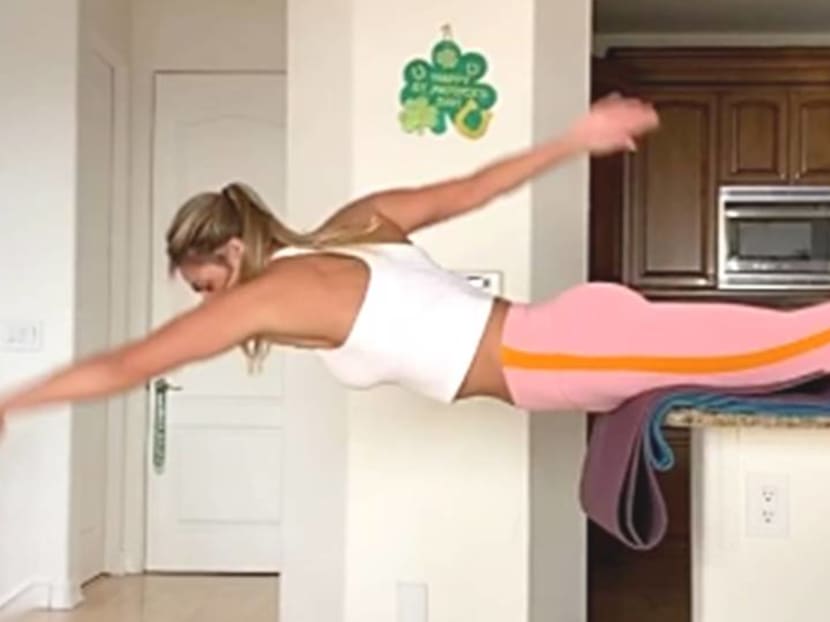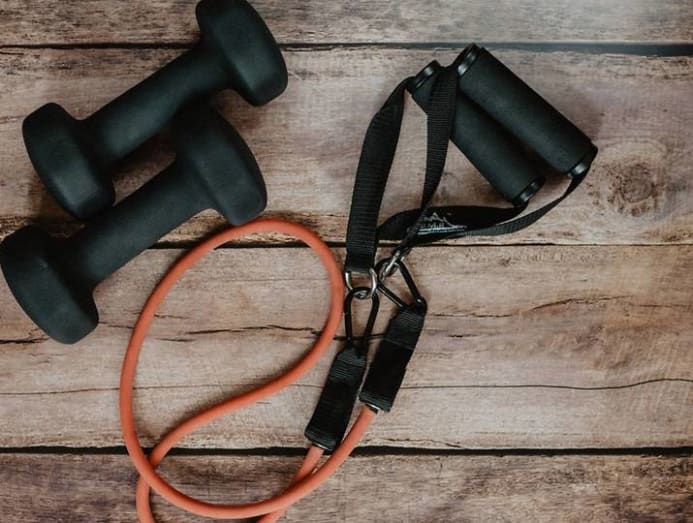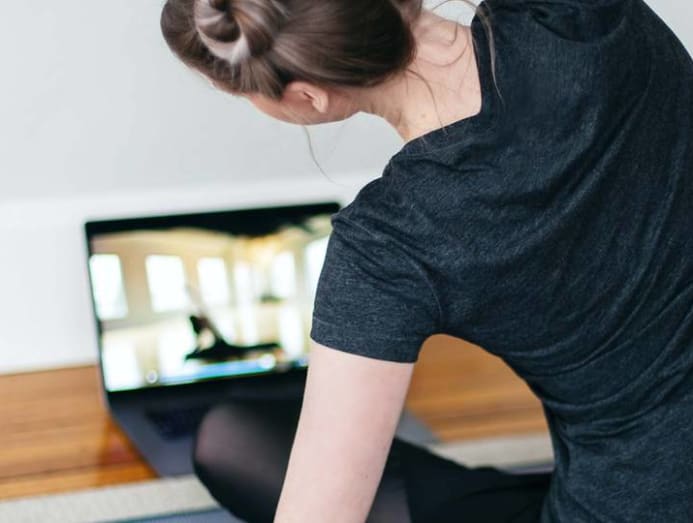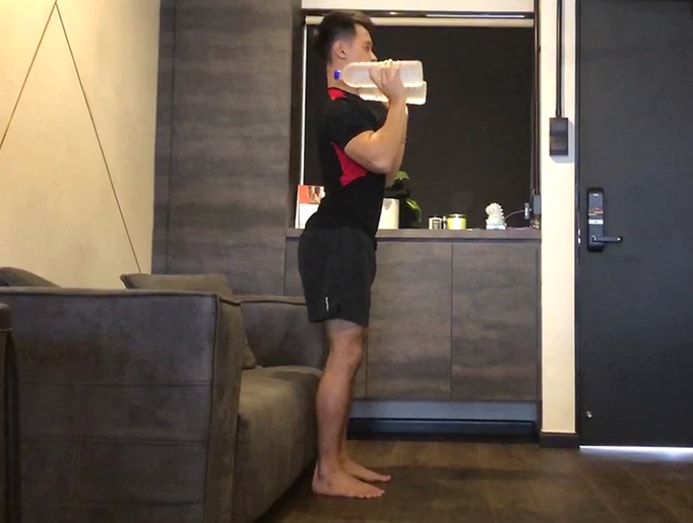Not all online home workouts are safe for you – how to prevent injuries
There’s a lot to choose from these days. But some social media fitness personalities might just be showing off to get more views. And others are, well, Olympic athletes.

Russian Olympic swimmer Yuliya Efimova's viral workout video is fun to watch but probably not something you'd want to actually do. (Photo: Instagram/pryanya93)
For many of us, home workouts are proving to be the only thing that can help us retain some semblance of a routine as the days blend together during the now extended “circuit breaker” period.
And with the wonders of YouTube and other streaming services, you can now pick from so many different types. Yoga, pilates, simple bodyweight exercises – the choice is up to you.
Still, not all workouts are created equal. Or rather, not every body is created equal when it comes to what exercise to do.
READ: Feeling tired while working from home? 5 easy exercises to boost your energy
Sure, some of these sound interesting enough to try – like Olympic Russian swimmer’s Yuliya Efimova’s viral workout video where she does “laps” to strengthen core muscles while balancing on her kitchen counter.
But we’re no Joseph Schooling so an Olympic athlete-level workout is probably a far cry for many (and also risky), even if it makes for great viewing.
So how do you know what’s doable and what’s not for you? CNA Lifestyle spoke to fitness trainers to find out the basics on how to get in shape safely – if you're following anyone online.
Not having the right equipment or using the wrong ones can lead to injuries, said Davin Choo, a freelance fitness trainer. But there are some that are less risky than others.
“External resistance from resistance bands, light dumbbells and household items do not have the same potential for risk compared to heavy dumbbells/barbells used improperly,” he said.
It might thus be safer to rely on such “lighter” equipment as compared to “proper” ones.

There’s also one tool you should be using during this time – your brain.
While it might be an unlikely situation, Choo bought up the issue of potential injury if you’re “ego-lifting”, which is basically trying to impress someone (who’s watching you anyway?) with your workout numbers.
If you do have equipment to use at home, you should ensure that it is set up correctly as well, said fitness professional Sufian Bin Yusof. For example, anchoring a suspension trainer properly.
BE CAREFUL OF SOCIAL MEDIA INFLUENCERS
With all that said, one possible source of injury could come from picking a workout that is too intensive or beyond your skill level.
“If you are mostly sedentary and have not exercised regularly, it’s best not to start with high intensity work,” said Sufian.
Choo also highlighted that with the recent circuit breaker measures, some social media influencers might be trying more extreme acts in order to get views.
“With the surge in home workouts on social media, many fitness personalities are going out of their way to attract eyeballs by performing impressive or difficult acts,” he said.
“Videos such as lifting or bench pressing your bed or doing handstands on your partner can be entertaining but dangerous for people who are not experienced or have existing injuries.”

With the lack of access to professional help or assistance, it is also possible that you could get injured due to improper form when carrying out your home workouts.
Choo said: “Bodyweight exercises usually utilise higher repetitions and using improper form during repetitive motion can really add up. For example, poor form while doing simple push-ups can lead to rotator cuff injuries over time. Some legitimate exercises such as handstand push-ups could carry a higher risk for injury.”
RULE OF THUMB: MONITOR YOUR HEART RATE
One way to know if an exercise is too intense or out of your league is to measure your heart rate, according to Sufian.
“A good rule of thumb is: If you're unfit, your heart rate shouldn't be above 155 for a prolonged period,” he said. Prolonged periods could be measured as 20 minutes or more, he added.

He also brought up a measurement known as Rate of Perceived Exertion (RPE), which goes from a scale of zero to 10.
At an RPE of 10, one would feel breathless and unable to form full sentences. Sufian said that a good indicator of what workout to choose would be one that keeps you within an RPE of six or seven, which means that you can still talk without having to catch your breath.
Choo also provided some advice on how to progress in your workouts if you start to find them too easy.
“For example, instead of progressing from push-ups to handstand push-ups because the former is too easy, one can manipulate the tempo by going down slower, add additional load using a backpack, or change the angle by having a slight incline below your feet to make it hard,” he said.
“There is a myriad of methods to increase the intensity of an exercise without risking injuries.”





